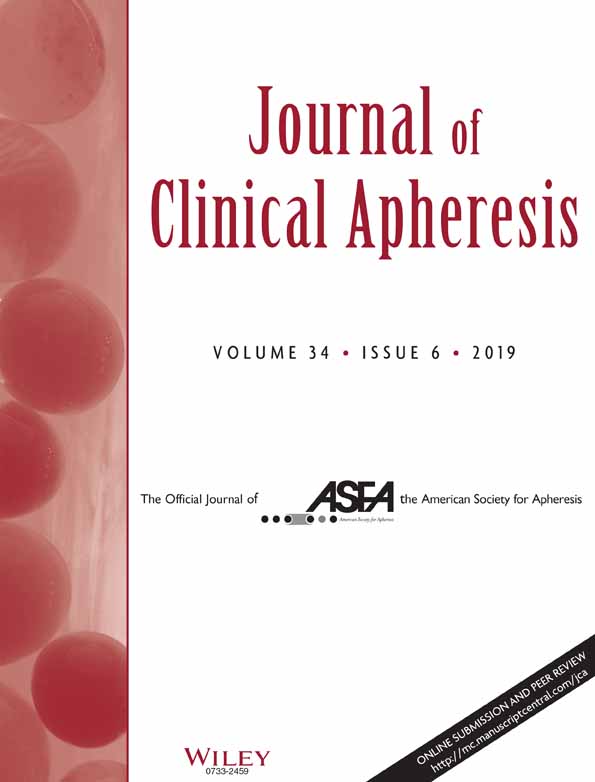Iron deficiency anemia associated with extracorporeal photopheresis: A retrospective analysis
Funding information: Mayo Clinic Pharmacy Services Discretionary Fund
Abstract
Background
Extracorporeal photopheresis (ECP) is associated with few adverse effects. We have anecdotally noted patients treated with long-term ECP develop iron deficiency anemia (IDA).
Methods
We performed a retrospective chart review of adult patients who received ECP for any indication at Mayo Clinic Rochester and Mayo Clinic Arizona. The primary objective was to describe the cumulative incidence of IDA at 1 year of ECP therapy.
Results
A total of 123 patients were eligible for analysis. Graft-vs-host disease was the most common indication for ECP (n = 76, 61.8%). At 1 year of ECP therapy, the cumulative incidence of IDA was 24.1% (95% CI, 14.2%-32.9%). At 5 years, the cumulative incidence of IDA was 68.3% (95% CI, 38%-83.8%). Risk factors for the development of IDA included: cumulative number of ECP sessions (HR 1.34, 95% CI, 1.05-1.73 per 10 additional sessions, P = .022), an indication for ECP of solid organ transplant rejection (compared to cutaneous T-cell lymphoma, HR 5.46, 95% CI, 2.06-14.49, P < .001), and proton pump inhibitor use at baseline (HR 2.15, 95% CI, 1.1-4.21, P = .03). Iron supplementation was initiated in 29 of 37 evaluable patients who developed IDA, with a cumulative incidence of supplementation in 77.2% patients within 3 months of recognition of IDA (95% CI, 55.8%-88.3%). Hemoglobin normalized in 50.1% of patients started on iron supplementation for IDA within 7 months (95% CI, 25.2%-66.7%).
Conclusions
Iron deficiency anemia is common in patients receiving long-term ECP and occurs throughout ECP therapy. IDA resolved with iron supplementation in half of patients.




